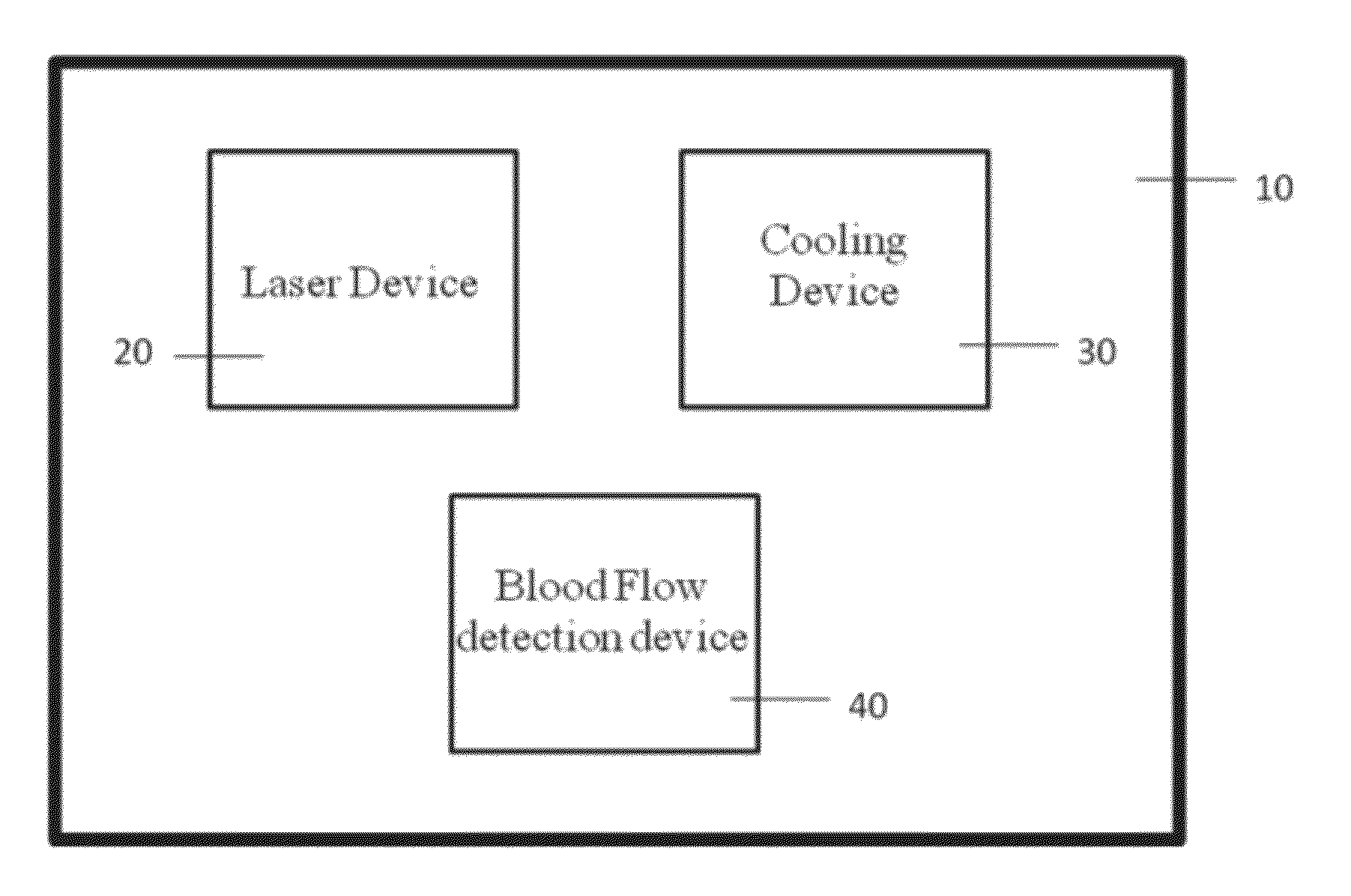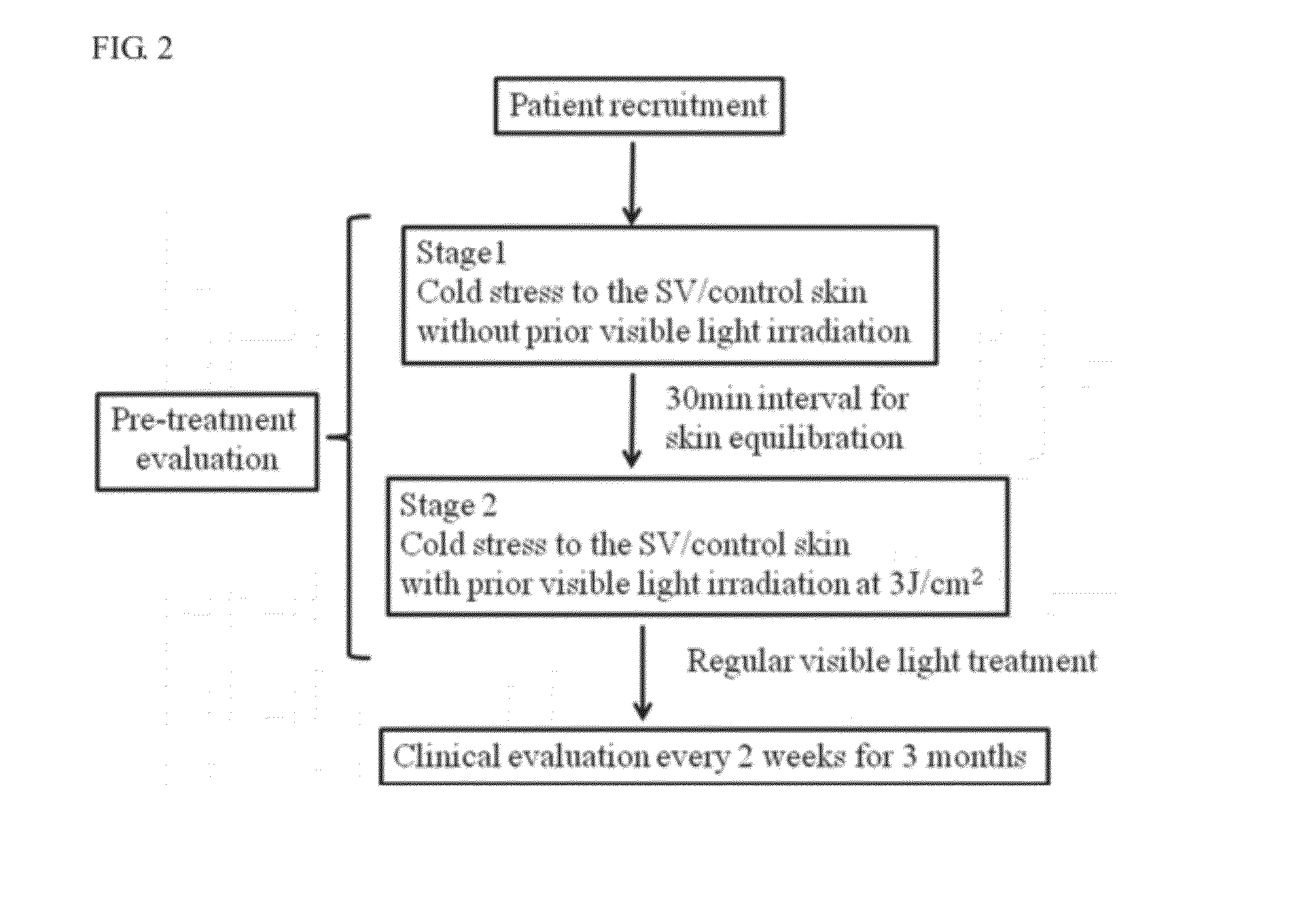Noninvasive cutaneous blood flow assessment as a response predictor for visible light therapy on segmental vitiligo
a segmental vitiligo and noninvasive technology, applied in the field of prediction of the response of visible light therapy on segmental vitiligo, can solve the problem of not having a judgment standard to predict the therapy outcom
- Summary
- Abstract
- Description
- Claims
- Application Information
AI Technical Summary
Benefits of technology
Problems solved by technology
Method used
Image
Examples
example
Example 1
A Device for Evaluating Visible-Therapy Segmental Vitiligo (SV) Treatment Result
[0023]The present invention provides a device (10) for evaluating the Segmental Vitiligo treatment effect by a visible-light therapy (e.g. FIG. 1). The device comprising a laser device (20), a cooling device (30) and a blood flow detection device (40). The laser device is used for irradiating the affected area with the visible light, and the wavelength range is 633±5 nm. The cooling device is used for cooling the affected area with the cool-stress at 0° C.˜4° C. after visible light irradiation which determines a function of autonomic nerves of patients. The blood flow detection device is Doppler Flowmeter (PerFlux System 5000, Perimed, Sweden) is used for measuring the blood flow of the affected area after the cool-stress. Theoretically the blood flow is determined by the numbers of red blood cells moving in the measured volume as well as the average velocity. Analyzed by the analysis program ki...
example 2
An Evaluating Method for Visible-Therapy Segmental Vitiligo
[0024]The present invention provides an evaluating method for visible-light therapy on Segmental Vitiligo (SV) (e.g. FIG. 2). The present invention first recruited 14 Segmental Vitiligo patients for evaluating clinical information (Table 1), and then provided a method for SV visible-light therapy comprising three steps.[0025](a) evaluating a blood flow of an affected area and a normal skin after a cool-stress[0026](b) after irradiating a visible-light, evaluating a blood flow of the affected area by the cool-stress; and[0027](c) after a visible-light treatment of clinically evaluating to determine treatment time.
[0028]In the example, blood flow of the affected areas and the control skins were recorded and then placed in the cold-water packing at 0° C.˜4° C. for 10 minutes. Via the cool-stress, function of autonomic nerves of the patient skin was determined. In this step, visible-light irradiation was not performed. Subsequen...
PUM
 Login to View More
Login to View More Abstract
Description
Claims
Application Information
 Login to View More
Login to View More - R&D
- Intellectual Property
- Life Sciences
- Materials
- Tech Scout
- Unparalleled Data Quality
- Higher Quality Content
- 60% Fewer Hallucinations
Browse by: Latest US Patents, China's latest patents, Technical Efficacy Thesaurus, Application Domain, Technology Topic, Popular Technical Reports.
© 2025 PatSnap. All rights reserved.Legal|Privacy policy|Modern Slavery Act Transparency Statement|Sitemap|About US| Contact US: help@patsnap.com



